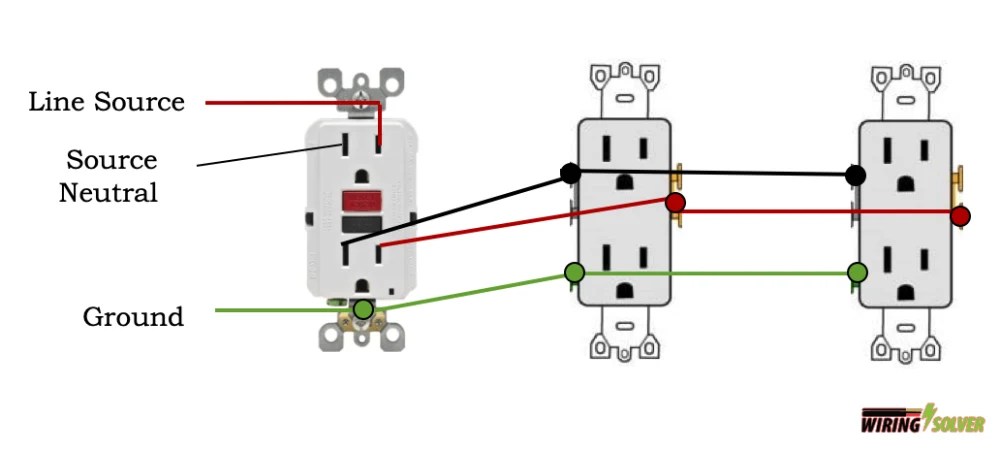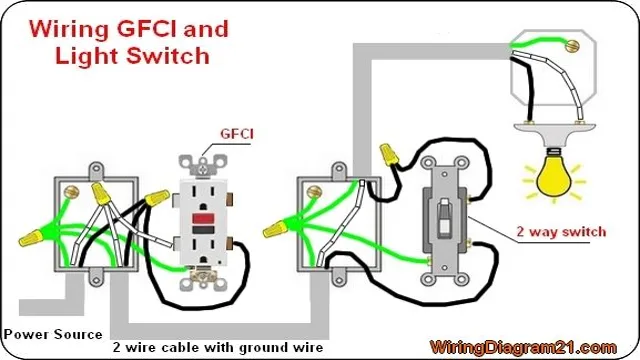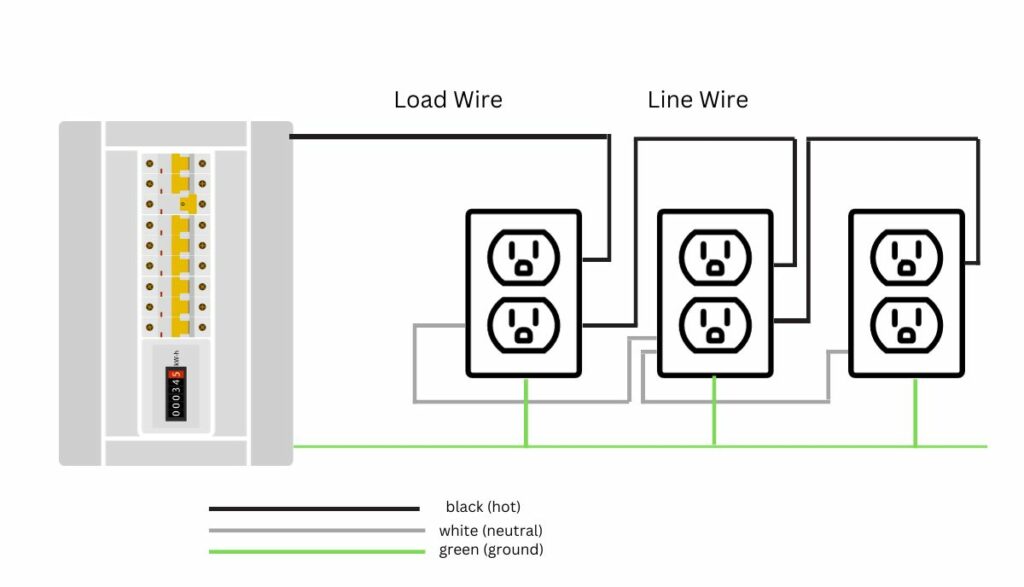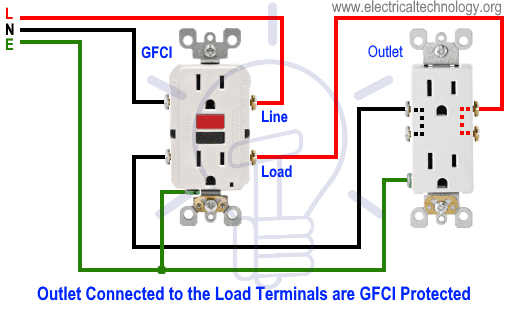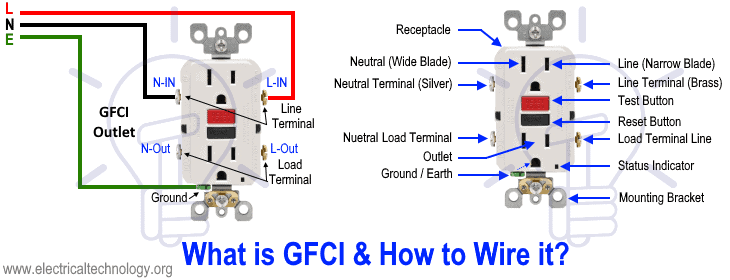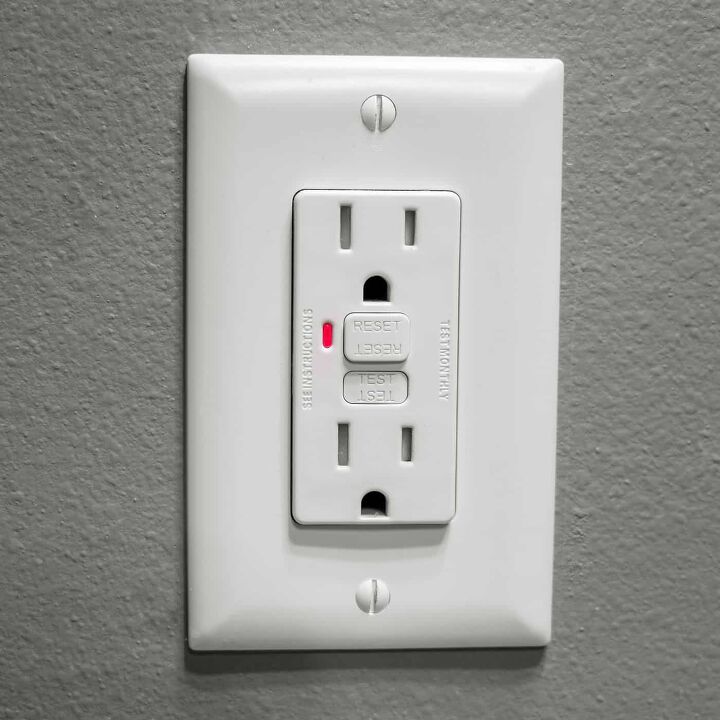Can You Have Two Gfci Outlets On The Same Circuit

The chilling realization that your electrical system might be a silent threat lurking behind your walls can be unsettling. Many homeowners find themselves pondering electrical safety questions, especially when dealing with Ground Fault Circuit Interrupters (GFCIs). One frequently asked question is whether it's safe, or even effective, to have multiple GFCI outlets on the same circuit.
This article delves into the intricacies of GFCI circuits, exploring the implications of installing multiple GFCI outlets on a single circuit. We will examine the potential benefits and drawbacks, referencing expert opinions, electrical codes, and practical considerations to provide a comprehensive understanding of this crucial aspect of electrical safety. Ultimately, the goal is to empower readers to make informed decisions about their home's electrical system and ensure the safety of themselves and their families.
Understanding GFCI Functionality
A GFCI outlet is a specialized type of electrical receptacle designed to protect against electric shock. It works by constantly monitoring the current flowing to and from an appliance. If a discrepancy of even a few milliamperes is detected, indicating a ground fault (electricity flowing through an unintended path, like a person), the GFCI trips, instantly cutting off the power.
This rapid response can prevent serious injury or even death. GFCIs are typically required in areas where water is present, such as bathrooms, kitchens, garages, and outdoor locations.
The Question of Multiple GFCIs on a Single Circuit
The core issue is whether having two or more GFCI outlets on the same circuit is permissible and if it offers any advantages. The short answer is yes, it's generally permissible by electrical codes, but it doesn't necessarily provide added protection.
The National Electrical Code (NEC), the standard for safe electrical installation in the United States, doesn't prohibit multiple GFCIs on the same circuit. However, it's important to understand the ramifications of this configuration.
Potential Issues with Redundant GFCIs
One of the main drawbacks of having multiple GFCIs on the same circuit is the potential for nuisance tripping. A minor fault in one part of the circuit might cause all GFCIs on that circuit to trip, leading to unnecessary power outages.
This can be particularly frustrating if you're unsure which GFCI tripped and are forced to reset each one individually. "While not inherently dangerous, this can lead to inconvenience and confusion," says Mike Holt, a renowned electrical code expert.
Another concern is the potential for masking a genuine electrical problem. If one GFCI is faulty or improperly wired, it might interfere with the operation of other GFCIs on the circuit, preventing them from tripping when a ground fault occurs.
Benefits of Downstream Protection
Despite the potential drawbacks, there can be situations where installing multiple GFCIs on a single circuit is beneficial. One common practice is using a single GFCI outlet to protect other standard outlets located downstream on the same circuit.
The GFCI outlet acts as the primary protection, and any standard outlets wired after it are also protected from ground faults. This is often referred to as downstream protection.
This approach is code-compliant and can be a cost-effective way to provide GFCI protection to multiple outlets. However, all outlets downstream are protected by the one GFCI outlet.
Code Compliance and Installation Considerations
It's crucial to ensure that any GFCI installation adheres to the NEC and local electrical codes. Incorrect wiring can render the GFCI ineffective and create a serious safety hazard.
According to the Electrical Safety Foundation International (ESFI), a leading non-profit organization dedicated to electrical safety, "Improperly installed GFCIs can provide a false sense of security and fail to protect against electric shock." Therefore, hiring a qualified electrician for GFCI installation is highly recommended.
When installing GFCIs, it's essential to correctly identify the "line" and "load" terminals. The line terminals connect to the power source, while the load terminals connect to the downstream outlets being protected. Reversing these connections will prevent the GFCI from functioning correctly.
Alternative Solutions: GFCI Circuit Breakers
An alternative to using GFCI outlets is to install a GFCI circuit breaker in the electrical panel. GFCI circuit breakers provide protection for the entire circuit, including all outlets and hardwired appliances connected to it.
This approach can simplify the installation process and reduce the risk of nuisance tripping, as there is only one GFCI device per circuit. Additionally, it provides protection for circuits that may not have readily accessible outlets, such as lighting circuits.
GFCI circuit breakers are more expensive than GFCI outlets, but they offer a comprehensive level of protection. They are highly recommended for providing safety for circuits that feed outlets in bathrooms, kitchens, and other wet locations.
Expert Opinions and Best Practices
Electrical professionals generally agree that while multiple GFCIs on the same circuit aren't inherently unsafe, they are often unnecessary and can create more problems than they solve. The best approach is to strategically place GFCIs where they are most needed and ensure they are properly installed.
"Prioritize GFCI protection in areas where water is present and always consult a qualified electrician for any electrical work," advises John Williamson, a licensed electrician with over 20 years of experience.
Regularly testing GFCIs is also essential to ensure they are functioning correctly. Most GFCI outlets have a test button that should be pressed monthly. If the GFCI doesn't trip when the test button is pressed, it should be replaced immediately.
Conclusion: Prioritizing Electrical Safety
In conclusion, while you can have two or more GFCI outlets on the same circuit, it's essential to carefully consider the potential drawbacks and benefits. The NEC permits this configuration, but it doesn't necessarily enhance safety and can lead to nuisance tripping and other complications.
Ultimately, prioritizing electrical safety involves a combination of code-compliant installations, regular maintenance, and informed decision-making. By understanding the principles of GFCI functionality and consulting with qualified professionals, homeowners can create a safer and more reliable electrical system for their homes and protect themselves and their families from the dangers of electric shock.
The future of electrical safety likely involves more advanced monitoring systems and smart devices that can proactively detect and prevent electrical hazards. As technology evolves, it's crucial to stay informed about the latest advancements and adopt best practices to ensure a safe and secure electrical environment.
